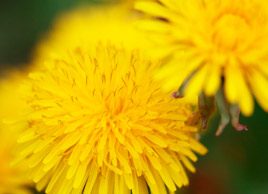Natural home remedies: Warts
Having a wart can be a source of embarrassment, but it doesn’t have to be. Try these home remedies to rid yourself of your unwanted visitor

Source: Adapted from 1,801 Home Remedies, Reader’s Digest
If you have a wart, it means the human papillomavirus (HPV) has invaded a tiny cut in your skin. HPV is really an umbrella term for many strains of a virus that can show up all over the body. Some types of warts are found singly, other times in clusters. Generally, the wart appears as a pale skin growth with a rough surface.
What you can do for warts
‘ Cover the wart with a small piece of duct tape. Cut a piece that will just cover the wart. Stick it on and leave it there for six days. When you take the tape off, soak the area in water for a few minutes, then use a disposable emery board or pumice stone to file down the dead, thick skin. Leave the wart uncovered overnight and apply a new patch in the morning. Repeat the procedure until you’re wart-free.
‘ Grind up a few vitamin C tablets, mix with enough water to make a paste and dab it onto your wart. Cover the paste with a bandage or tape. Because the tablets are highly acidic, they can help wear the wart away and also fight the virus itself.
‘ Be sure to dry off your wart after you wash, to reduce the chance of spreading the virus to someone else. When warts are wet, they seem to be more contagious.
‘ Don’t scratch or pick at warts. You can transfer the virus when you scratch other areas of skin.
A natural boost for warts
‘ Apply freshly crushed garlic directly to the wart and cover with a bandage. The caustic effect of the garlic will cause the wart to blister and fall off in as little as one week. Apply new garlic every day, avoiding contact with healthy surrounding skin. (Smearing the area around the wart with petroleum jelly can help.)
‘ Apply a compress or cotton ball soaked in vinegar and tape it down on the wart with an elastic bandage for at least one or two hours daily.
‘ Pull a dandelion from your yard, break the stem and squeeze some of its liquid onto your wart. Do this daily as needed. The sap is mildly irritating, so it stimulates your immune system to take care of the wart. Don’t use dandelions that have been treated with herbicides during the previous few years.
‘ If a piece of birch bark is available, dampen it with water and tape it over your wart with the inner side of the bark facing your skin. The bark contains salicylates, which are found in many over-the-counter wart treatments.
‘ You can also make a tea from powdered birch bark, available from health-food stores. Steep a teaspoon of bark in a cup of boiling water for 10 minutes, let it cool, soak a cloth in it and press it on the wart.
‘ Tape a piece of banana peel, inner side down, over the wart before you go to bed. A chemical in the peel can slowly dissolve the wart. Or, try the same with a piece of lemon peel. An oil in the peel seems to discourage warts.
‘ Papaya contains an enzyme that digests dead tissue. Make shallow cuts on the surface of an unripe papaya, collect the sap that runs out and let it coagulate. Mix the thickened sap with water, then apply morning and night.
‘ A popular folk remedy is to rub a juicy, freshly cut slice of raw potato over a wart.
‘ Crush a fresh basil leaf and tape it over your wart with waterproof first-aid tape (or even regular tape in a pinch). The leaves contain virus-killing compounds. Replace with fresh basil daily for up to a week.
‘ Several times a day, apply a tincture of goldenseal, an herb that contains compounds that fight off bacteria and viruses.
‘ Rub castor oil into your wart daily. The oil can make warts disappear, perhaps by keeping them moist so the skin cells in the wart just come apart.
‘ Vitamin E oil is also said to work against warts. Once a day, pierce a vitamin E capsule and rub the contents into the wart.
‘ If you have an aloe vera plant on the windowsill, break off a leaf and squeeze a few drops of gel onto the wart. Repeat daily.
‘ Plantar warts’painful warts on the bottom of your feet’are sensitive to heat and may disappear in a few weeks if you soak your feet in hot water (43ûC to 45ûC) for a about 15 minutes a day. This remedy was published in a medical journal in the 1960s. For an added kick, pour one part of vinegar into four parts hot water.
Don’t miss out! Sign up for our free weekly newsletters and get nutritious recipes, healthy weight-loss tips, easy ways to stay in shape and all the health news you need, delivered straight to your inbox.




